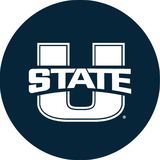
4 minute read
A Glimpse into Sabbatical with Professor Michael
Cover image: Bears Ears National Monument
As I type this, my gaze is eastward, looking out of a new office window, up at Logan Peak. It’s Keith’s former office. And before him, it was Prof. Craig Johnson’s office (and Craig reputedly picked it because, as Keith recalled him saying, “it has the best view of all LAEP offices”). Keith and I traded offices last year, and, I’m pleased to say, also our roles, when he took over as department head.
Advertisement
Another result of our position changes was that, starting in July of 2020, I began a 1-year sabbatical, along with a new joint faculty appointment. After 5 years of doing ‘overtime’ as a faculty member in, and briefly as director of, the Outdoor Product Design & Development (OPDD) program, Dean Ken White made my dual role in LAEP and OPDD permanent and ongoing.
The majority of my sabbatical year was spent looking into two topics. One of those interests—the importance of business practices for successful landscape architecture firms—had never received serious study in our profession. Are business skills unimportant in design firms, I wondered?

Searching for "city" in the sagebrush ocean
To probe this overlooked question, I applied for the Facultyin-Residence position at Design Workshop. This annual Residency welcomes one faculty researcher into Design Workshop’s offices, granting her/him unprecedented access to the personnel, practices and projects of one of the oldest, most successful and certainly the most forward-thinking firms in our profession. The Residency allowed me to dig deeply into why Design Workshop has been so successful for 50+ years.
While COVID was a mix of both curse and blessing for the year’s sabbatical projects, for my Faculty-in-Residence role, it led to many benefits. For example, pandemic-induced Zoom skills meant I could easily interact with all of Design Workshop’s 150+ employees (53 were interviewed), take part in firm-wide monthly staff meetings, share a LACES research seminar (“CPTED 101— Then and Now”), and observe training sessions (e.g., Project Manager Boot camp by PSMJ). Zoom also meant I could effectively be ‘present’ in each of the company’s eight offices, yet never travel.
My time with the firm revealed business strategies, firm management and leadership training perhaps never before glimpsed by competitors or researchers. The Residency’s preliminary research results look promising. They suggest that business practices are a vital topic in leading firms, and that this topic could become a new and significant area of research in landscape architecture. Consequently, I’m looking forward to sharing what was learned from Design Workshop with students and colleagues in LAEP. Ultimately, this aspect of practice may help our students graduate as more skillful, confident and well-compensated professionals.

Badwater Basin. Temp: 115 F. Elev: -282'.
The second major focus of my sabbatical—the history of vehicle-based adventure travel in the outdoor products industry—demanded more significant COVID adjustments. Rather than traveling to East Africa to study the roots of safaris and the role of vehicles like the Land Rover and Land Cruiser, I instead ‘steered’ my work in a new direction (and did so from a domestic base of operations). Derived from safaris and similar expeditions, contemporary trends in adventure travel have, in recent decades, coalesced into a multi-billion-dollar market termed “overlanding”. To better understand this market phenomenon—its culture, marketing and product development—I opted to delve deeply into it through many of the same lived experiences that consumers themselves go through.
To accomplish this, I identified two of the most popular overland vehicle platforms: adventure touring motorcycles (BMW R1200GS Adventure) and adventure vans (Mercedes Benz 4x4 Sprinter van). I researched, purchased and outfitted one of each for the type of off-grid adventure travel that is marketed to overland consumers. To explore the growth of this aftermarket outdoor products community, I worked with almost 3 dozen leading brands, visiting many, observing their design/manufacturing processes, and becoming familiar with the components they make.

Olmstead Point, Yosemite N.P.
Given my passion for the design disciplines of LAEP and OPDD, perhaps it won’t be surprising to know that a part of my sabbatical focused on how adventure travel is used to experience landscapes. These two interests coalesced as I explored how the “father of cultural geography”, J.B. Jackson, used a series of BMW motorcycles to crisscross the U.S., interrogating* the vernacular landscape during his remarkable career. I was able to relive some of these practices, while also studying Jackson’s legacy and writings.**
What have I learned from the year’s explorations? Three observations stand out. First, read more; we all need to recharge our thinking.*** Second, design relies on smart business; therefore, we must embrace both skillsets. Finally, venture out. Do so routinely. Do it alone at times. Do it with a sketchbook or camera in hand. Preferably do it in terra incognita. But above all, regardless of grades, deadlines, family, work, weather or countless other socially-acceptable excuses, just leave. Because we all need sabbaticals, whether they last a year, or only an afternoon.

Robert Smithson's "Double Negative", NV
* Jackson served as an intelligence officer in WWII in France, where is fluent command of the language and his prior study of architecture and geography allowed him to analyze the German and Allied military strategies through a unique lens.
** Like Jackson, I primarily on two wheels, exploring the states west of the 100th meridian, from Texas to the Canadian border, over Yosemite’s wildfire-scorched high country and into the fiery Badwater Basin of Death Valley, across Nevada in search of Robert Smithson’s “City” (after finding his “Double Negative”), climbing to the roof of the Rockies, and following the footsteps of Canyon Country explorers and westbound pioneers.
*** Stephen King, in his book “On Writing”, warns that to be a writer you need do two things repeatedly: write a lot, and read a lot. I finished approximately 1 book per week this year. Badwater Basin. Temp: 115F. Elev.: -282’.







